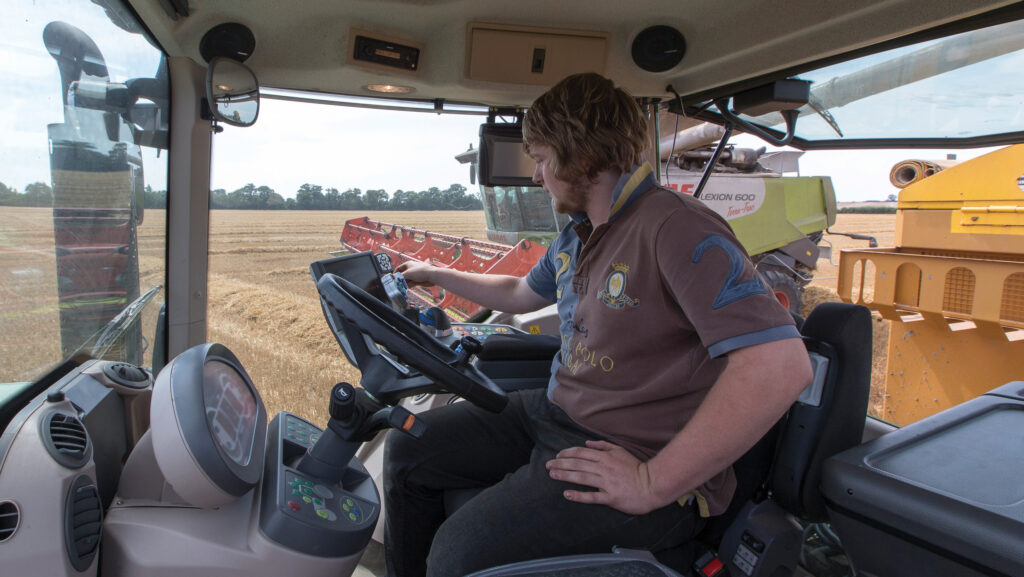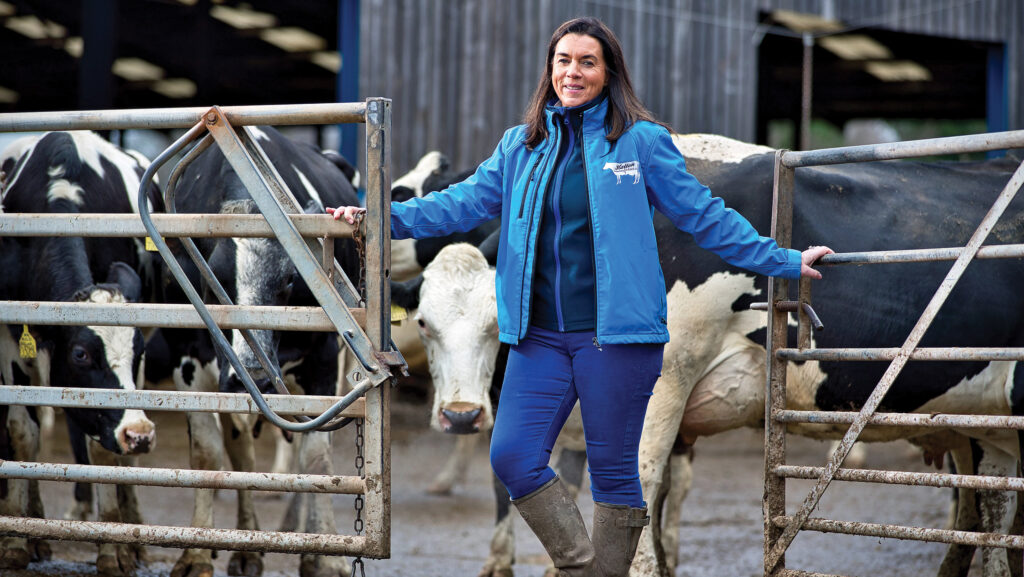8 tips to help you recruit the right farm staff
 © Wayne Hutchinson/Alamy Stock Photo
© Wayne Hutchinson/Alamy Stock Photo Employee recruitment and retention is tough across agriculture, from large farming estates to smaller family farms.
From the generational shift to workers seeking non-manual work, together with the sometimes unsociable nature of farm jobs, to the misconception that agriculture offers no career progression, all have contributed to the struggle to fill vacancies.
The location of farms in rural areas with their small labour pools adds to the challenge.
See also: Different ways to reward good farm employees
Neither is the outlook encouraging as the number of people in the workforce aged between 16-30 is forecast to fall 5% by 2050.
But there are some tentative signs the situation could be starting to improve.
The “Clarkson effect” has reawakened interest from the younger generation in farming, and the industry is taking ownership of the recruitment and retention crisis by upping its game and making farms appealing places to work.
New initiatives such as The Institute for Agriculture and Horticulture’s (Tiah) Careers Advice Hub have helped too.
With input from experts, we look at what businesses can do to position themselves as a “go-to” employer for job applicants, and to keep staff once recruited.
Top tips
- Look at yourself and your business and what you offer as an employer – what can you do to improve?
- Being a good employer is a must, not a “nice to have”, and is a learnable skill, so make use of resources that are often free or part-funded
- A good boss is a good teacher – teach employees to believe in themselves, their capabilities and strengths
- Learn from bosses in businesses outside agriculture.
1. Make a job appealing and the farm an attractive place to work
Decent working conditions, hours, accommodation, training and development opportunities, and good communication skills all add interest to vacancies and an encourage existing workforce to stay.
Paul Harris, of recruitment consultancy Real Success, says a lot rests on the interview, but farmers are often poor at conducting that process properly.
“An interview often consists of ‘Hello, how are you, are you vertical and breathing and can you speak English? I’m desperate so when can you start?’ ”
Whatever the position being advertised, learning to interview in a professional style is essential.
Take the time to show a candidate around and present the farm in the right way as first impressions count – recruitment is a competitive process, with job seekers often having more than one opportunity to choose from.
Farmers can spend a lot of time thinking about what they want from a candidate, but Izak van Heerden, senior knowledge exchange manager at the AHDB, recommends switching that mindset to what the applicant might want from the job.
“Put yourself in the other person’s shoes and consider why they would want to work for you and what you can do to make that happen, whether it’s accommodation, giving them weekends off, or being flexible.”
A good starting point for farmers is to ask themselves “Would I work for me?”, advises Lantra’s head of agriculture Andrew Palmer.
“If the answer is ‘no’, you have got a lot of work to do,” he says. “The building blocks start with you, the farm. Make your place attractive, and that will sell a lot.”
Some farms fail on offering the most basic of needs, such as having a working toilet. Paul insists they must get these fundamentals right, and that includes having a robust health and safety policy.
“If I’m a parent and thinking about where I want my children to work, one of the reasons against farming could be because of the health and safety record, so let’s get real – if we are going to attract people into the industry, let’s deal with some of the stuff that is under our control as farmers.”
2. Don’t shy away from using social media
Social media gives farm employers access to a national, if not international, labour pool.
For more senior roles, such as farm managers, recruiters will place adverts in industry publications, but for other positions social media can be very effective.
Fear of animal rights activists is one reason why some refrain from taking to social media.
“We encourage farmers to have accounts and engage on social media but they tell us they don’t want people to know where they are, that animal rights activists might turn up at their door,” says Paul.
But he urges a different mindset, pointing out that activists are already aware of where farms are located, and advises farmers to fight back with positive messaging.
“If we hide ourselves away and don’t tell people what a wonderful industry we work in, how are people expected to know about it, especially those from a non-rural environment?
“People in an inner city school are never going to find out about farming unless they see someone on Instagram or Facebook posting about it, so I am very passionate about us being brave enough to talk positively about our farms and our industry.
“Get out there and tell people if you want to attract people to your industry, be loud and proud.”
3. Develop a reputation as a good employer
Tess Howe, Tiah’s head of partnerships and policy, says once a business has a reputation as a good place to work, it becomes much easier to “pull people through the door”.
Consider what potential employees might expect from working within the business.

© GNP
4. Utilise free industry initiatives and resources
Advertising positions through specialist educational establishments such as Harper Adams University is a popular and well-trodden route.
It can offer an easy solution to finding good staff, says Alex Hardy, business development manager at the university’s School of Sustainable Food and Farming.
A recruitment initiative the university carried out in conjunction with Leaf 18 months ago involved 2,000 young people principally in inner city locations.
It resulted in more than 50 visiting the campus, where they were given insights into careers in agriculture.
They had no contact with agriculture until that point, but afterwards 65% said they would consider a career in the industry.
“There really is enormous value in our being loud and proud about our industry, yes to speak to the people we already know but to also speak to those that we don’t,” says Alex.
“If we can do that really well we can position the industry in a light where we can control the narrative and be really clear about what we are trying to do as an industry.”
AHDB’s AgriLeader programme offers individuals from farms and businesses a chance to develop to drive their business forward.
The initiative is another tool that helps farms with recruitment, including the online library of Labour Lifecycle resources which covers different stages of recruiting, retaining and managing staff.
This is a good first step to the basics, says Izak, such as producing a profile for the role and how to advertise and interview for it.
5. Show a candidate’s ‘influencers’ that farming is a good career
It’s not just the people who are in the market for a job that farmers must sell the position to, but those that have influence over them, such as parents and careers advisers.
These influencers might have an outdated perception of agriculture, believing it offers no career progression. “Those perceptions are really holding us back,” says Tess.
“When we have on-farm initiatives, the children get excited but as soon as they leave and discuss with someone else a career in farming they can get held back.
“I think it is really important to be shouting about the different roles, how people can move through the industry, and the opportunities that are there.”
There can be a gulf between the language farmers use when talking about their industry and what the next generation is looking for.
Farmers might talk about their passion for farming but future employees could be more interested in sustainability, protecting the environment or food nutrition.
“The more we can speak the language people understand, the more I think we can drive forward,” Tess reckons.
Apprenticeships, internships and training partnerships are important routes to potential employees too, with many employers paying the Apprenticeship Levy.
6. Offer a distinct career path for every role
Some workers will solely want a job they enjoy that will pay a guaranteed wage, but others are interested in positions that offer clear career progression.
Gone are the days when a recruiter could tell a candidate that training might be considered further down the line, says Andrew – candidates want to hear about this at the interview stage.
Without that, the position might not be an attractive option.
7. Be a good manager and communicator
One of the principal reasons farm employees leave a role is down to poor management.
While farmers often have exceptional technical skills in all areas of agriculture, from growing crops to managing livestock, they are less skilled at managing people.
Paul says getting training in how to manage and communicate with staff and participating in leadership programmes can be very beneficial.
“We have got to accept the fact that if we are going to keep people, we need to learn people management skills – 98% of people we ask say they are not leaving because of things that are not right about the farm itself.
“It’s because they can’t work with the person they are working with or because of the way the boss speaks to them.”
Utilise AHDB workshops and its AgriLeader programme, the Tiah website and other resources to get better at management.
8. Make staff retention a key performance indicator (KPI)
Putting a figure on the cost of replacing staff can encourage businesses to be better employers.
Many businesses outside agriculture list it as a KPI and update the figure every month, says Andrew.
“Making it a KPI in a farm business account would probably shake up some people,” he believes.
Recruitment was also covered in our Transition Webinar series. Watch the discussion in full on our Transition Webinars page.
Case study: Tom and Karen Halton, Halton Farms

Karen Halton © Richard Stanton
Of all farming sectors, recruiting into dairying is the arguably the toughest, but one business not in that position is Cheshire-based Halton Farms.
Tom and Karen Halton have dedicated time, effort and resources to making their 530-cow dairy farm an appealing place to work.
Their strategy includes getting the basics on pay, hours and good communication right, and rolling out innovative initiatives for staff such as “cream cake Fridays” and hiring the services of a sports masseuse.
Local resource
While the Haltons attract workers from further afield, they recruit the majority locally, often through word of mouth via existing employees.
For example, their herd manager is a rugby player who drums up extra labour for jobs such as sheeting down silage among his teammates, as it not only pays but offers them a fitness opportunity.
It often creates an appetite for them to seek further work, such as night milking in the three-times-a-day system.
The farm’s direct milk sales vending business also gives potential future employees an insight into what a job in farming can look like.
People become curious and ask questions, says Karen. “It opens up new ideas to farming they didn’t have before – we recruit people in that way too.”
The business enters competitions, engages with the public through social media, and hosts on-farm educational events and farm walks, providing platforms to inform and show off what it does.
Team culture
Encouraging a good team culture is important too, to dispel the reputation that farmers always work in isolation.
The Haltons have separate teams for milking, feeding and calf rearing, enabling employees to take ownership of their roles and to strengthen their connection to the farm.
Facilitating situations that allow staff to socialise and integrate is also part of the culture at Halton Farms.
This includes stocking a farm fridge with beers to share an after-work drink, providing cream cakes for a get-together before Friday afternoon milking, and paying for the services of a sports masseuse weekly.
Three-times-a-day milking enables flexibility on working hours.
Tom and Karen see great value in training opportunities, and not just for their staff.
“Don’t be afraid to invest in self-development, it starts with you as a business owner,” says Karen. “And appreciate people, you can’t do without them.”
